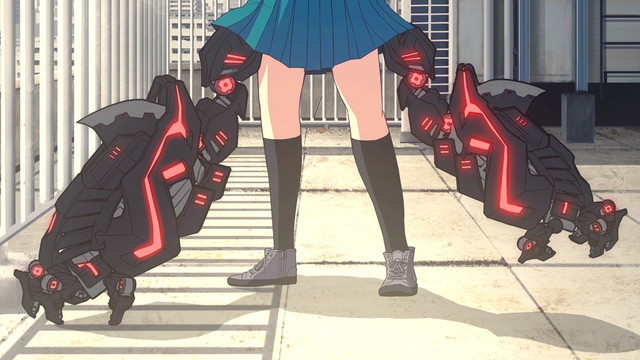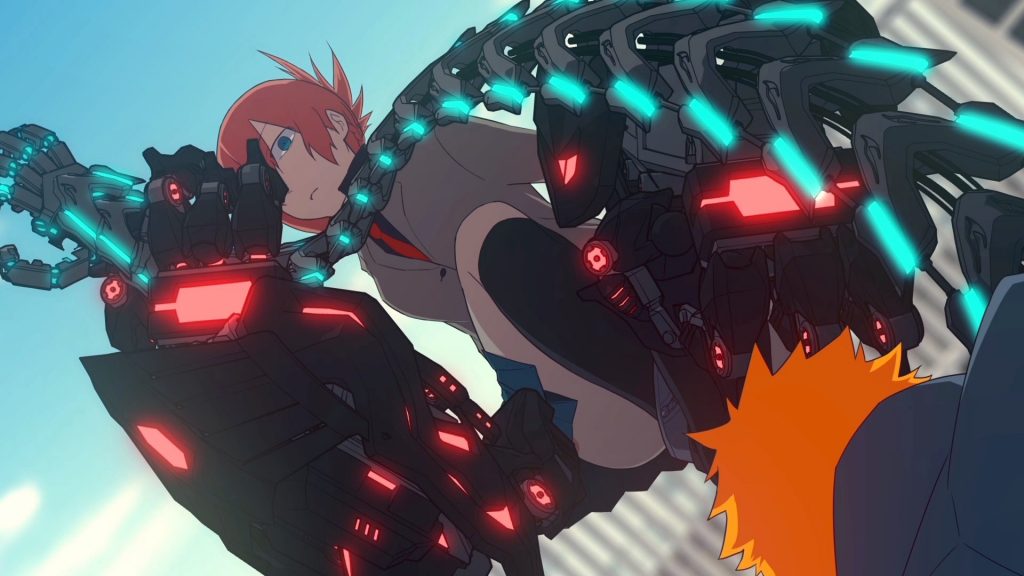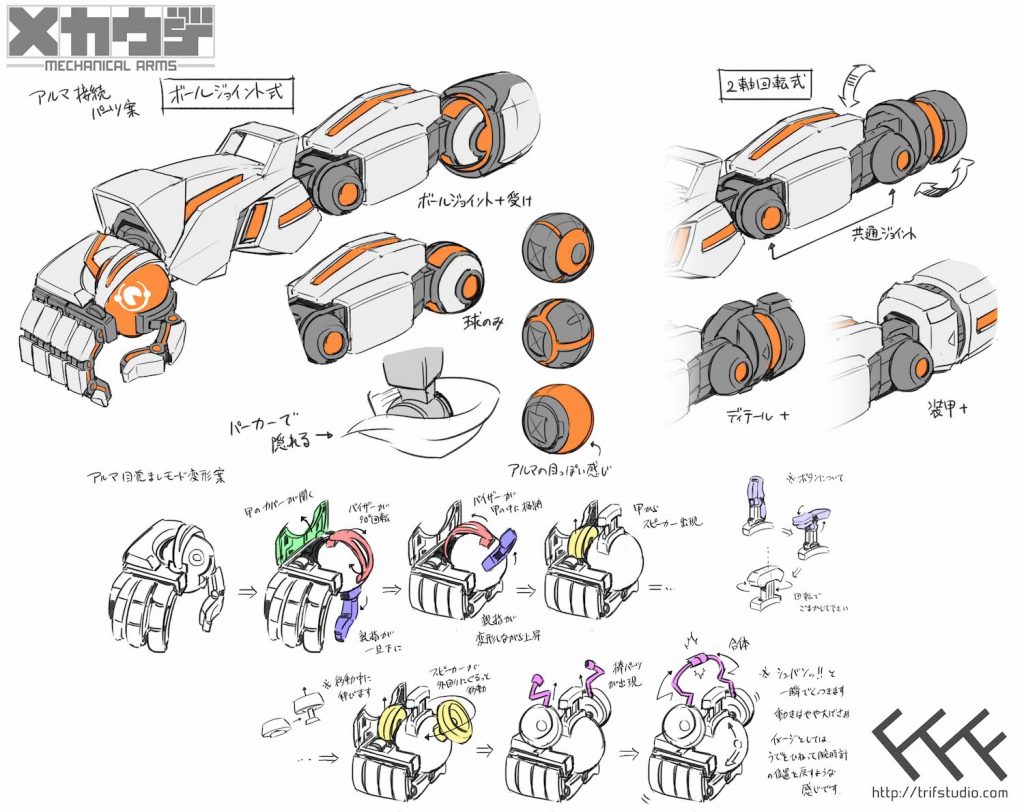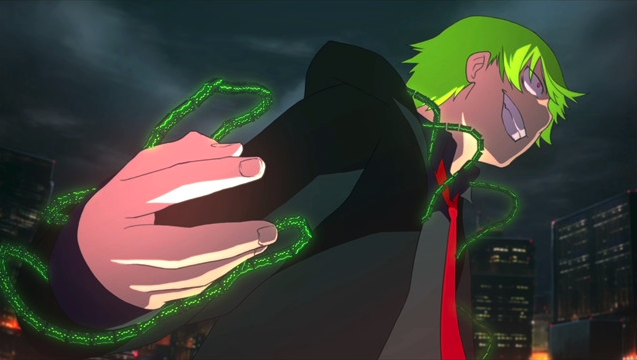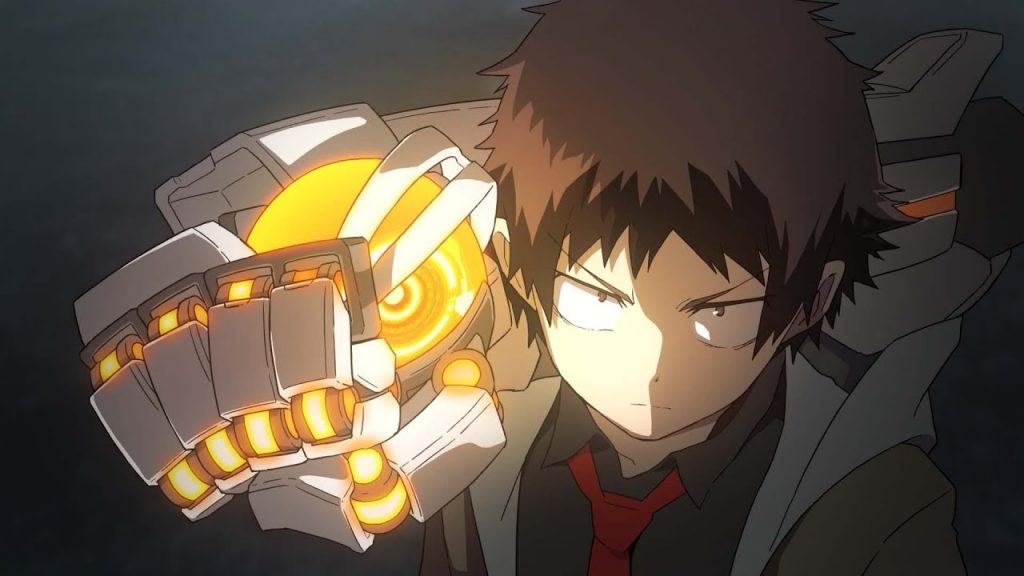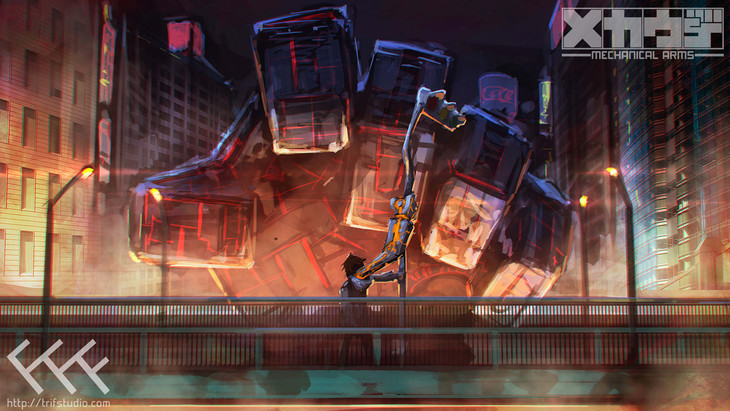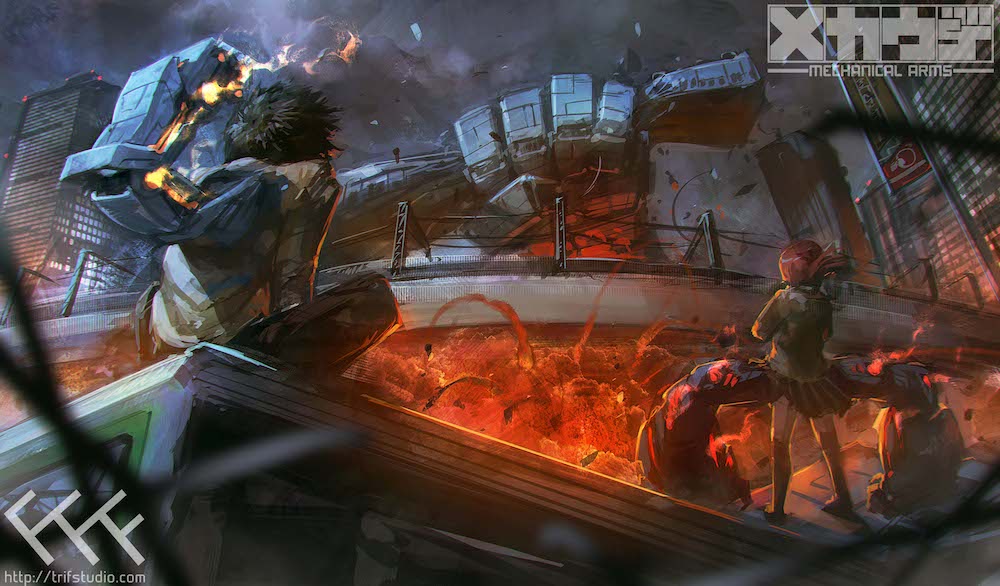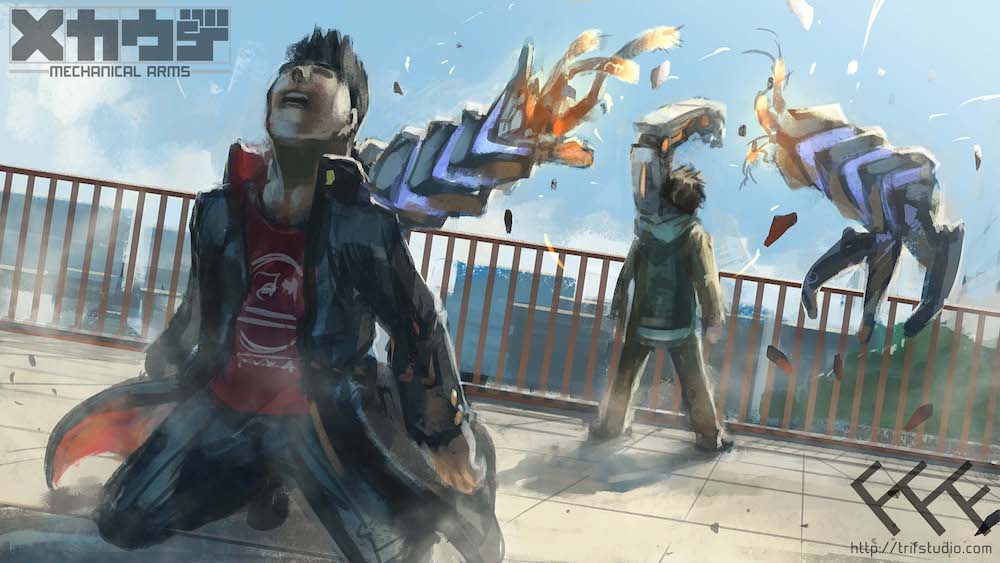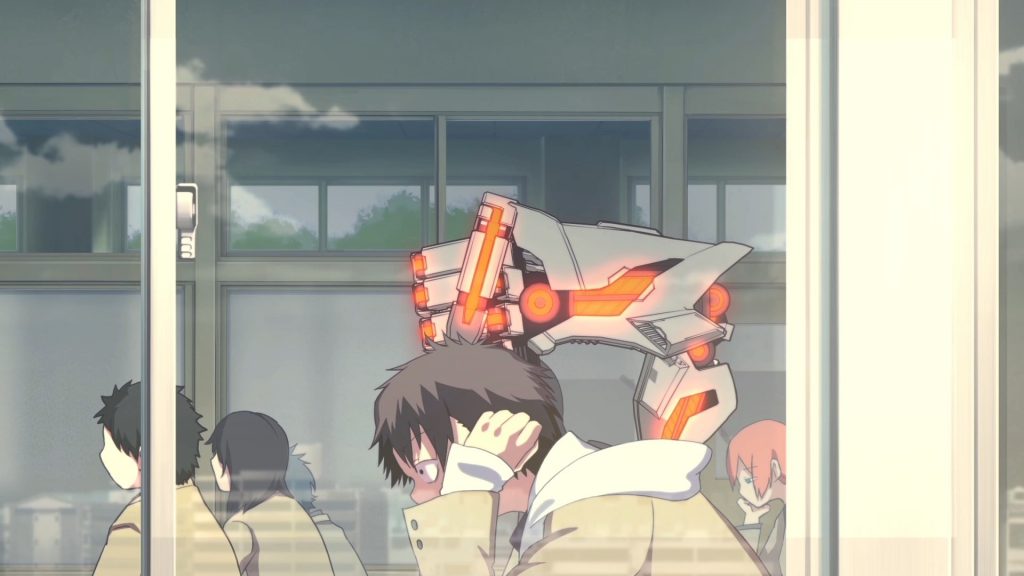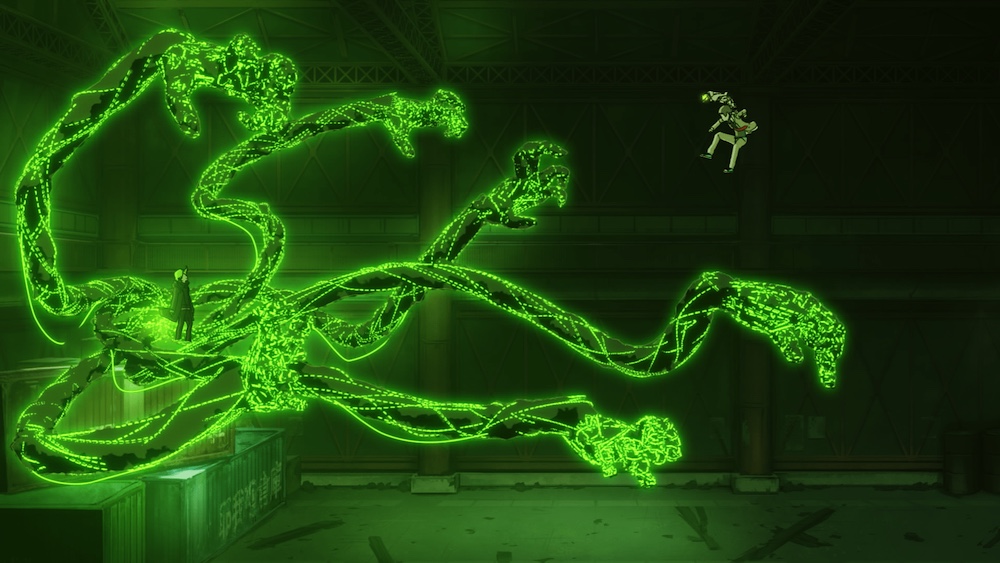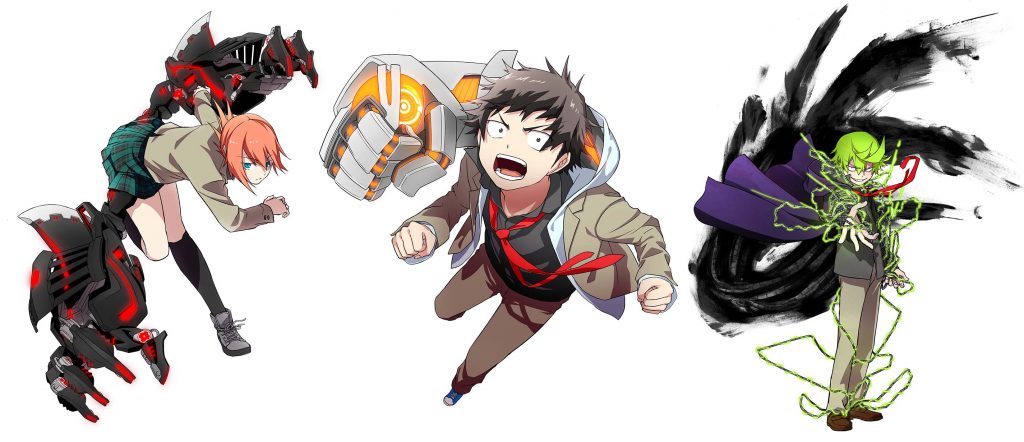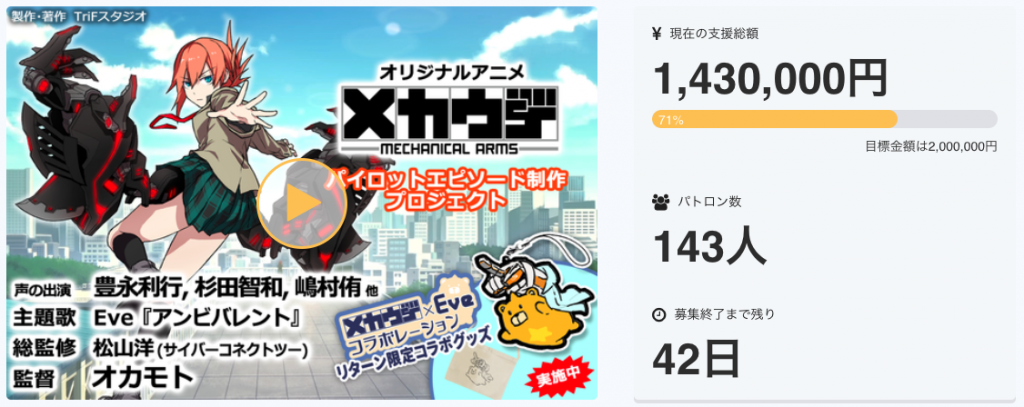This is my translation of a recent article from the Famitsu website discussing the fundraiser campaign for a new anime TV series “Mecha Ude” aka “Mechanical Arms” supervised by CC2.
▶︎ Listen to some key people behind the birth of “Mecha Ude” as they discuss why they’ve teamed up with CC2, future development, and more.
ーStarting off, please tell us a little bit about the background of how TriF Studio created the original anime “Mecha Ude”.
Aso: TriF was originally production circle comprised of like-minded students. In the beginning, I mostly worked on live-action video production, but as I received more and more opportunities to speak with other producers, I decided I should start a company with those who had been there from the beginning. We’re good at CG and VFX, but as I was on the job, I came to realize that “I can’t make my own anime with this CG,” which is how this project came to be.
ーAs far as setting out to make your first original work, you still hoped that would be with “Mecha Ude”, right?
Aso: Yes, that’s right. My first idea was to make a completely CG piece rather that including illustrated animation work, but once Okamoto, the director for this project, started working part-time for us back while he was a student, I showed him some of the initial artwork, and he was like, “This looks really cool!” After that, we kept talking about the project and we came to the conclusion that “we should create an original anime with this idea.” In the end, Okamoto joined our company from that point on.
ーCould you tell us more about how “Mecha Ude” was created?
Okamoto: Originally, we didn’t have the idea of making this into an anime in mind, so we just kept drawing illustrations to our heart’s content. It wasn’t until we got comments from people who saw the illustrations that said, “I’m looking forward to an anime version of this!” The rest went without a hitch. We made a promotional video, uploaded it to YouTube, and started a kickstarter campaign geared toward overseas contributors. And now you’re pretty much caught up to date.
https://www.youtube.com/watch?v=1x94elCipH0
Aso: Putting it simply, Okamoto is an illustrator with a creator’s mentality who, since school days, had come to draw a variety of character illustrations. One of the illustrations that would become the basis behind “Mecha Ude” was so fascinating that I thought “We need to make this into something that moves”, and the discussion about it just grew from there. But with no story or any detailed setting besides the bit about “mechanical arms sprouting from humans”, it would be a project that stood totally on this one concept. Simply, the first visual impact was very intense. The heroine killed me in one blow. (haha)
ーWhy did you decide on crowdfunding?
Aso: Crowdfunding helped out a previous TriF production video, so that’s why we took that route. At the time, we started to think that we could produce an anime with the aid of crowdfunding. We started preparations from there, started recruiting staff by fall of 2016, plus we were able to exceed our projected fundraising goal.
ーWhy did you target overseas rather than Japan?
Aso: Of course, in the beginning we had Japan in mind, but we wanted to give a voice to the rest of the world, so we started production without a single promotion in Japanese. I don’t know if this strategy will work well or not, but I’m very thankful that some Japanese media have covered this project during its campaign window. There have even been talks about a Japanese reverse import.
ーSo, this is mostly a campaign that excludes Japan, but have you received any support from Japanese contributors?
Aso: Out of 999 supporters, about 6% are from Japan. Generally speaking, “Kickstarter” is a English-based crowdfunding system, so supporters tend to be offset, but I think we can assume that at least 60 people from Japan helped support the project.
ーDid you feel a response after actually meeting your crowdfunding target amount?
Aso: We started this crowdfunding project with the intention of making a 25 minute short animation, so we were looking for help to make that happen. We achieved our goal and started production last year. I originally started making it to be 25 minutes long, but after the amount of feedback that I’ve received about it, I feel that I have a much greater responsibility to finish it neatly.
ーA crowdfunding campaign has just started for Japan and CC2 has just been added for overall supervision. How did you come about to tag them for this project?
Aso: I had the opportunity to work on the production for “.hack//G.U. TRILOGY”, and for a time, I was going to work for CC2. Then last year at the “CEDEC+KYUSHU 2017” event in Fukuoka, I was there for an unrelated project, but Matsuyama-san was there, so in the waiting room, I asked him, “I’m making an original anime called “Mecha Ude”. There are so many things I don’t understand; would you be able to give me some advice?” Thankfully, I received a pleasant response, “If I will suffice.” So that’s how CC2 became involved with the overall supervision.
Matsuyama: At the time we started working on “.hack//G.U. TRILOGY”, the video production team thought it was a good idea to work in SAI, but that was back when we only had the one office in Fukuoka and we were in the middle of starting a huge project. We wanted to make a movie but we had our hands tied with game development, so it was difficult for us to handle the CG animation on our own, so we asked another company and other freelance animators to help us out. One of them was Aso. In fact, we launched the in-house project “A5” two years ago. The five As standing for “Astonishing, Ambious, Advanced, Amazing, Animation”, we hoped this would allow us to make our own original animation work. While I was thiking about A5, I came across an article on “Mecha Ude” and I thought “This is hot stuff!” I didn’t realize that it was Aso’s work until a little after that. I finally met Aso for the first time in a long time at “CEDEC+KYUSHU 2017” and was able to talk about his ideas. Later, we set up a meeting to discuss things further such as, “Is ‘Mecha Ude’ a one-off and that’s it? Or are you thinkin gof making it into a feature lengthed film or longer series?”
ーLast year’s Kickstarter was to help make a 25-minute animation short, so you can’t really see the full scope of the “Mecha Ude” project.
Aso: We started this project because we wanted to see Okamoto’s illustrations come to life through animation, so I didn’t have any specific ideas about the story or anything except for a 25 minute short; however, after hearing Matsuyama-san’s thoughts, my desire to make this into an animated TV series–if it were possible–grew even stronger. He told me, “If you’re thinking about making a TV anime, after developing one or two ideas, make a single episode from one of those ideas.” And from these discussions, “Mecha Ude” became a 12-part series.
Matsuyama: From the pilot movie all we really learn about the “Mecha Ude” is that “an arm sprouted from a hoodie” and “two arms stretch out from a skirt”. The visual aspect is pretty catchy, but for those who are interested will be wondering “What the heck are these mechanical arms?” So, we continued meetings with Aso and his team and decided to shoot for a TV anime series. That’s why I suggested that they “make a plot for 12 episodes and choose four of those to make into an anime.”
ーThis sounds a lot like how George Lucas’ “Star Wars” was originally a 9-part series from the very beginning and he chose one to make into a movie, which became a huge hit, and that’s how he could continue making the remaining episodes.
Aso: To make four episodes, you need a plot that that will reach between 1-3 episodes and for everything episode five and on, you need to connect things well. Your punchline needs to hit with the final 12th episode, so Matsuyama-san told me to thoroughly think about that.
Matsuyama: From there, we’ve had regular meetings with Aso and director Okamoto almost every week. Even though, we’re a video game developer, there are still many things in common between game and animation development. Since we’ve also been involved in animation production, we’ve gotten advice on things such as selecting voice actors, where we need to request sound recordings, production flow, promotion development, and more. But then before I realized it, I’ve been credited for the plot, scriptwriting, setting, and direction supervision, but you can see all of this at once. (haha)
Aso: Matsuyama-san has been extremely helpful to us; I’m very greatful.
ーSo, you’ve decided on a 12-part series. Do you know who will be in charge of the script?
Aso: We’ll be getting advice from Matsuyama-san, but the script will mostly be done by the members at TriF. Then we take that final product and create the pre-visalization, which is then touched-up by the screenwriter.
ーThe current “Mecha Ude” PV looks like uses traditional line art animation. Will this remain largely the same in the final product, or will it be CG animation?
Aso: Okamoto has her own style that she likes, so she’s aiming for traditional line art animation. We have other CG animators on staff, but as far as those with experience in hand-drawn animation, Okamoto is the only one, so we’ve had to adapt to a unique sort of production method. To try and explain it simply, first we create a CG animation cut of the character. Then we draw in the line art, and retouch them frame by frame.
ーPerhaps I don’t know how things are normally done, but it does seem like it would be easier to just stick with CG all the way through…?
Aso: In the beginning, Matsuyama-san told us this at many points. (haha) But since we have no experience making an anime, and since Okamoto herself hasn’t worked on medium to long pieces, this is the best way to make use of the skills that we have while maintaining the quality throughout. In actual anime productions, it’s a little taboo to redraw something that’s already been finished, but the way CG works, if we’re able to add in little fixes to the movement or color in the line art, it really helps out the staff that has little animation experience. This might seem pretty roundabout, but this is the only way that we could replicate the sort of style that Okamoto was going for.
Okamoto: At the time of launching this project, we had plans on making it completely CG, but I think traditional art draws out character expressions and the like better than CG, so they let me make the whole thing this way.
ーIn the general flow of animation production, you first begin with the world view and setting, then you think about the characters from there. After that you can create the storyboards and first rough sketches. But “Mecha Ude” creates a unique order to this process, doesn’t it?
Aso: Yes, that’s right. And it’s at those points where we got stuck over wondering what we should do that CC2 helped us out.
Matsuyama: It’s because the idea of “Mecha Ude” was really cool. It was like, I just needed to see the PV once to become a fan. I thought they had a really fleshed-out concept, which is why they could make such a great PV, but when we first spoke, I was told “the concept isn’t quite finished yet,” so I was really shocked. (haha)
Okamoto: I had the world view and everything in my head, but I’m really not that good at expressing that in words.
Matsuyama: That’s when I asked things like why does this guy exist here, with what sort of relationship do you want to progress the story so that the viewer is sucked in and wants to see what happens next. Those are the things that I suggested be clearly thought out when we spoke last year. At that time, Aso drew up some sketches that I took home with me and while discussing about it with the director, I made the pre visualization. If they were satisfied with the video, they could break apart the video and use certain frames as part of the storyboards. The order of this work is a complete mess. (haha)
Aso: There isn’t a single person here who can draw real anime storyboards. (haha)
Okamoto: There are specific rules for how to create video productions, so we’re working within those rules, but when you try to make a storyboard by including this and that, the passage of time gradually becomes hazy. I also thought that since I’m making a movie that it would be faster to make video storyboard. In the previous short stories and music videos that I’ve worked on, I’ve always worked directly from the pre visualization. I wondered if I could make a 25-minute length short in this same manner, but in the end, this is the method we stuck with.
Matsuyama: In ordinary animation with the storyboard as the design, multiple other people will work on creating it. It’s just about getting the image in your head onto paper, right? (haha) I think Okamoto is a genius on many fronts but is also pretty quirky. Through multiple meetings, I came to see that this was a suitable method for the TriF team to make use of the small project and keep pace with what the director had envisioned. It may be a little unusual doing things this way, but the plot for the first four episodes is complete and I’m working on the rest after the fifth episode now.
ーBy “live-action production”, is that when you have a script and you quickly shoot that on film and then edit it further in the studio?
Aso: Yes, that’s right. You’ll probably notice this when you talk to Okamoto, but I think there’s a side to her that thinks like an editor.
Matsuyama: That’s totally how video creators who work on promotional videos and commercials think. But as the scale of this project grew, this doesn’t necessarily work any more when there are more people on staff and things get more scattered.
Aso: I think this is the only way to do it because the number of people working on this project is still relatively small and the chain of command all goes back to Okamoto.
ーI think it’s really great that there are a lot of fans with common interests, whether they’re anime or game fans, but also because of the cooperation by CC2 on the supervision. Actually, Aso-san, what was your initial impression of CC2 as a company?
Aso: I still have a huge impression ever since “.hack//G.U. TRILOGY”. Of course, I knew of the name before that, but when I first got to work with them, I remember thinking “What a reckless company.” At the time, making a full CG feature-length film was a huge undertaking, and CC2 had never done such a thing before. From our perspective, I could only view it as jumping the gun. (haha) But, as the actual work progressed, and we were able to finish the project–not to mention for it getting such a positive response–I came to change my impression to something more along the lines of “it’s a company that can do amazing things”. Those memories stuck with me, and this time, too, Matsuyama-san clearly stuck out in my mind, and that’s when I heard his voice.
Okamoto: When I was little, I wasn’t allowed to play video games, so I didn’t get the chance to play any of CC2’s games, but “.hack” was pretty popular in my class, so I’ve at least heard of the name. Then when I was in junior high, I was able to get my hands on the comic version of “.hack//G.U.+” and when I saw Matsuyama-san’s illustrations at the end of the book, I remember thinking, “What is this… It’s dangerous to get close to someone like this…” (haha)
ALL: (haha)
Matsuyama: I was completely doing whatever I felt like. (haha)
Okamoto: Then for a while I lost track of CC2, but I finally saw the again during a game company lecture at my university, and I thought, “That’s the company that made that manga.” I was studying CG production and I was thinking about working for a gaming company where I could a bunch of different things, but I had to participate in an internship as part of my course work. My first choice was Level-5, my second was Ganbarion, and CC2 was my third.
Matsuyama: Yay! We magnificently made your 3rd choice! (haha)
Okamoto: However, I never heard back from my first two choices, so I guess I had to intern at my 3rd choice. (haha) Matsuyama-san was busy promoting something at the time, so I never saw him in the office. Maybe if I would have crossed paths with him, maybe I would have though, “I want to join this company.”
ーOn the other hand, thanks to not joining a gaming company, you’ve come to this point where you’re working on an animation–with CC2, no less–it’s crazy how fate works like that. Maybe even Matsuyama-san will illustrate “Mecha Ude” if it sees the release of a comic version.
Matsuyama: I’ll illustrate at any price. (haha)
ーAfter hearing your stories thus far, it really seems like the two of you are connected to CC2 by some strange fate, don’t you think? Lastly, please tell us a little about the future development of “Mecha Ude”.
Aso: Thanks to the kickstarter from last year, we reached the fundraiser goal to finance one episode, and that’s due to be released in July. Firstly, we’re going to domestically release one episode out of the 12 we’ve planned, but since we’ve got the plot for a total of 12 episodes, we’re going to open discussion with distributors and publishers to complete the remaining episodes. I’d also like to bring your attention to the CAMPFIRE campaign going on now in Japan, and I hope in this progression that we can make the last 11 episodes.
ーWith CC2 supervising the entire project, are you thinking about making a game for “Mecha Ude”?
Aso: If we have that opportunity, it would be great. I’d certainly go directly to Matsuyama-san to discuss that should the time come.
Okamoto: Just like with the animation we’re making now, we also possible for us to make our own games, too. (haha)
Aso: I’m much more of a newb making games than I am with animation. (haha) Anyway, we’re going ahead with releasing an episode in July, and we’re going to aim for eventually releasing a TV series, so it’d be great to have your support.
◾️“Mecha Ude” Production Notes
“Mecha Ude” is planned and produced by “TriF Studio”, an up-and-coming animation production company in Fukuoka. Beginning with a short promotional video first released on YouTube, an overseas fundraiser through Kickstarter successfully raised 7 million yen for the project, and a 25-minute “pilot episode” has been decided. This “pilot episode” is currently under development with hopes it will be released by summer 2018.
Synopsis:
100 years ago.
Machine lifeforms from another dimension arrive in search for the life energy “Albitorium”, which had been exhausted by their host star. In order to cross through dimensions, the living machines shrink their bodies down to just their arms and descend upon the earth where Albitorium is plentiful. By coexisting with other life on the planet, they are able to operate freely on the planet. Finally through making contact with a secret society of humans, the search for Albitorium begins. These machines are named “Mecha Ude” from their outward appearance.
Present day.
A certain Mecha Ude, sealed within a cube, is removed from the large corporate Kagami Group and subsequently lost. An ordinary junior high student named Hikaru finds it by chance and unlocks the seal on the cube. Within it appears to be the Mecha Ude “Alma” that had slumbered in silence for 100 years.
Alma tries to feed on Hikaru’s body but… eventually a strange co-op relationship between them begins.
◾️Current CAMP-FIRE Campaign (Japan)
Sources: Famitsu | Kai-You | Natalie
Translation by: Fire Sanctuary





